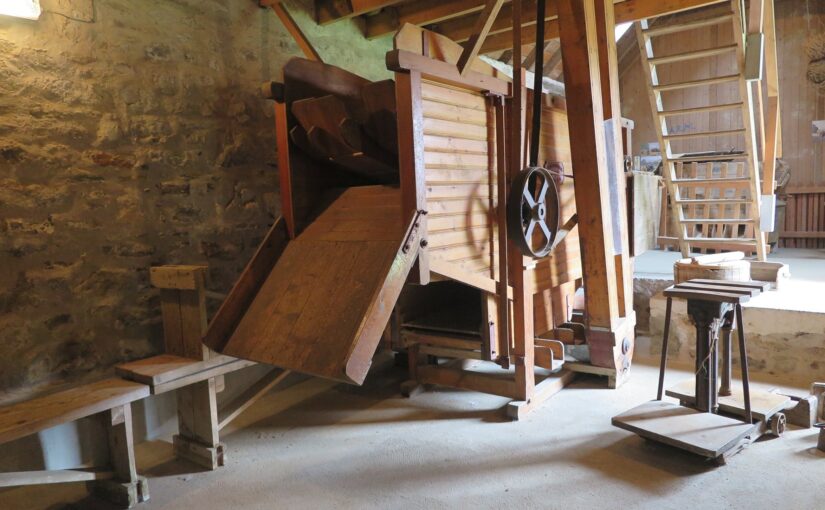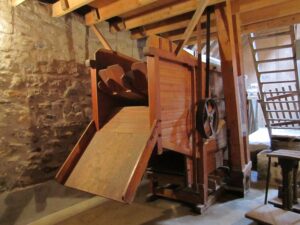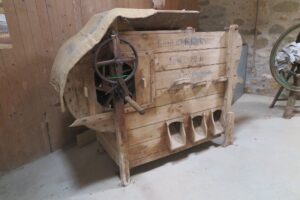By 1922 the Scottish agriculturist had a number of forms of power available to him or her: these included oil, gas, electric, steam and water power. While water power could be called the oldest, it still had its role. This was highlighted by an article in the Dundee Courier of 23 June 1923, which sets out new improvements made to the farm of Denmylne, Newburgh:
“Water power as asset in modern farming
In modern up-to-date farming it is essential that the equipment of both house and steading should be as nearly perfect as possible, and every proprietor and tenant should endeavour to introduce systems of electric lighting and instal suitable appliances for driving machinery. The use of water-power in both connections cannot be overestimated, yet it is amazing to find how much valuable power of this kind, easily available, is permitted to run to waste.
Quite recently Mrs Speedie, the proprietrix of Denmylne, Newburgh, in contemplating improvements on her property, found that by utilising the water running from the Loch of Lindores the efficiency of her threshing plant could be greatly enhanced and a more up-to-date, economical, serviceable, and brighter system of lighting for both the house and the steading introduced.
After consultation with the well-known firm of millwrights and engineers (Messrs Thos Morton & Co., Perth), Mrs Speedie installed a 14 by 4 feet over shot waterwheel, which is not only capable of driving a 48-inch finishing threshing-mill, but provides the power for supplying the whole establishment with a splendid system of electric lighting. Altogether, there are 70 lights throughout the farmhouse and steading. The driving power derived from the new system introduced is astonishing, for, apart from the driving of the mill, the dynamo generates electricity and charges accumulators. The simplicity of the plant and its reliability are amongst its best recommendations. The advantages it provides are apparent. In the matter of substituting for oil lamps an easier and cleaner method of lighting up the home, and steading, barn, stable, byre, loft, and courtyard-it effects a big economy in the management of a farm. Switches can be so arranged that every part of the buildings can be immediately illuminated with perfect safety.
Messrs Morton & Co. have established many water-power systems throughout Scotland, and where water is to be obtained at hand farmers are well advised to try the experiment.”
Quite an installation!


